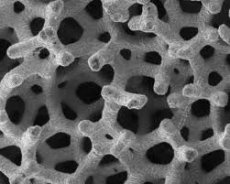Viral therapy successfully tested in cancer patients
Last reviewed: 16.10.2021

All iLive content is medically reviewed or fact checked to ensure as much factual accuracy as possible.
We have strict sourcing guidelines and only link to reputable media sites, academic research institutions and, whenever possible, medically peer reviewed studies. Note that the numbers in parentheses ([1], [2], etc.) are clickable links to these studies.
If you feel that any of our content is inaccurate, out-of-date, or otherwise questionable, please select it and press Ctrl + Enter.

The international group of scientists for the first time experienced a viral therapy for cancer patients. The results of the joint work of researchers from the UK, the US and Canada were published in the June issue of the journal Science Translational Medicine.
The idea of using viruses to fight malignant neoplasms originated in the early twentieth century, and the possibility of realizing such treatment was first proved in 1952. In 1970, it was found that reoviruses, which are widely distributed in nature and do not cause serious diseases in humans, preferentially select tumor cells for replication. This fact was confirmed after twenty years during the experiment with human tumor cells, and then on model mice.
Now it is known that reoviruses can destroy cells of various cancers, for example, colon cancer, dairy and pancreas, ovaries, brain and bladder. Penetrating into cancer cells, the virus particles trigger the mechanism of apoptosis - programmed cell death. In addition, they cause a reaction of the immune system and this also helps to remove some of the cancer cells.
Ten patients with colon cancer at a late stage of development participated in the trials. Metastases of a malignant tumor spread to the liver of patients, so each of the patients had already been prescribed an operation. Within a few weeks prior to surgery, participants in the study were given five rheovirus injections.
The scientists determined that the viral particles penetrated the blood cells and within the "transport" reached the tumor. During the operation, the virus was replicated in the liver tumor cells. In this case, the virus did not affect the nearby healthy tissue.
"In the course of our work, we have received excellent results and proved that it is possible to deliver the virus to the tumor by intravenous injection," said one of the study's co-authors, Dr. Kevin Harrington of the University of London.
